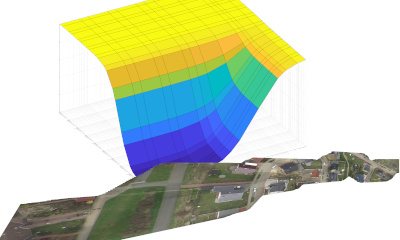For video surveillance, observed areas shall be presented in high resolution and have to be available in real-time to the human observer on the ground. Therefore it is necessary to transmit high resolution HDTV video (1920x1080, PCM data rate 622 Mbit/s) over channels with very small bandwidth, typically about 1 Mbit/s. Standardized video codecs like AVC (Advanced Video Coding) can achieve bit rate reduction up to 10 Mbit/s without noticeable differences. However, further bit data reduction is needed.
The goal is to reduce the data rate of HDTV airborne surveillance video by an additional factor of ten compared to standardized AVC coding.
Instead of retransmitting areas of the video sequence which have already been transmitted in one of the preceding frames, only "new areas" are detected and transmitted. Additional ROI detectors can be connected to the system to detect for instance moving objects and transmit them additionally. A block diagram is shown in Figure 1.

Figure 1: Block diagram of Region of Interest based coding system

Figure 2: Principle of picture reconstruction on decoder-side. In this example a picture is created out of new areas.
On decoder-side (Figure 2) a complete frame is reconstructed employing an global motion compensation. New areas and any additional data like moving objects are inserted at decoder-side to reconstruct the original frame.
With this approach HDTV video sequences can be currently transmitted with a bit rate of 3-4 Mbit/s.
We created several self-recorded aerial test sequences with a moving camera for the evaluation of algorithms for aerial (surveillance) video processing.
It can be downloaded here: TNT Aerial Video Testset (TAVT)

